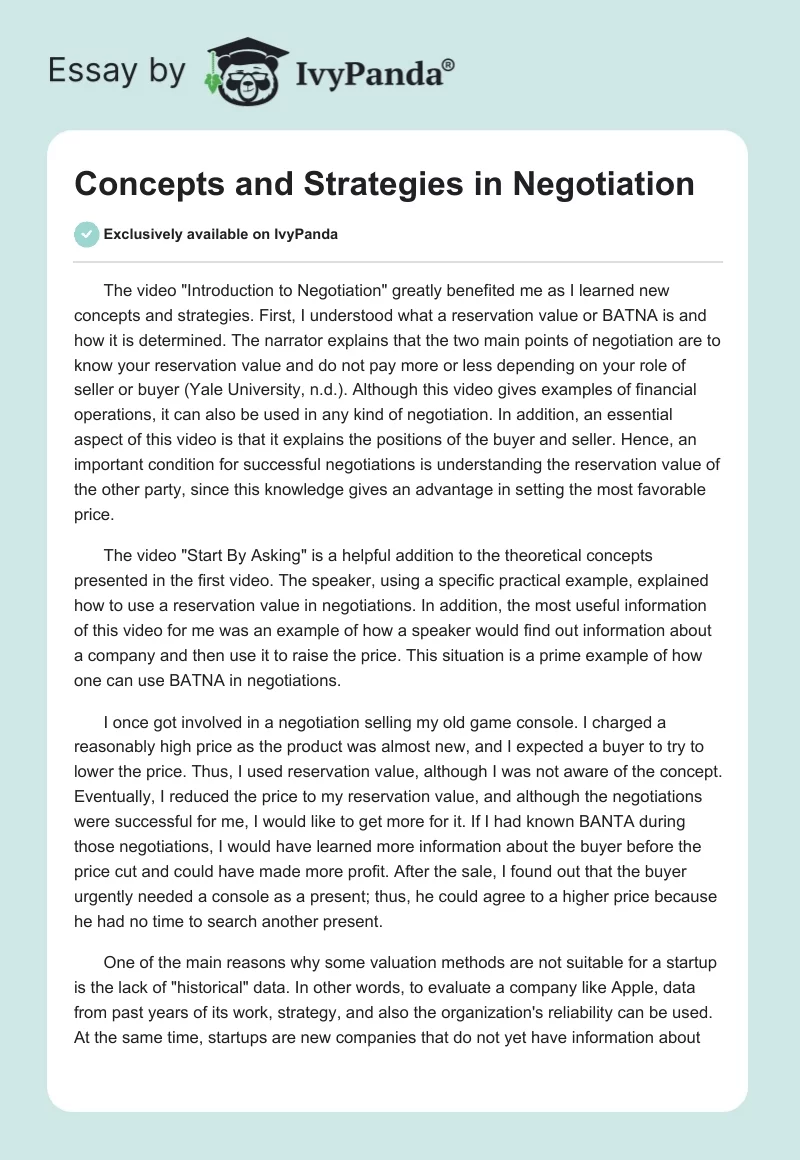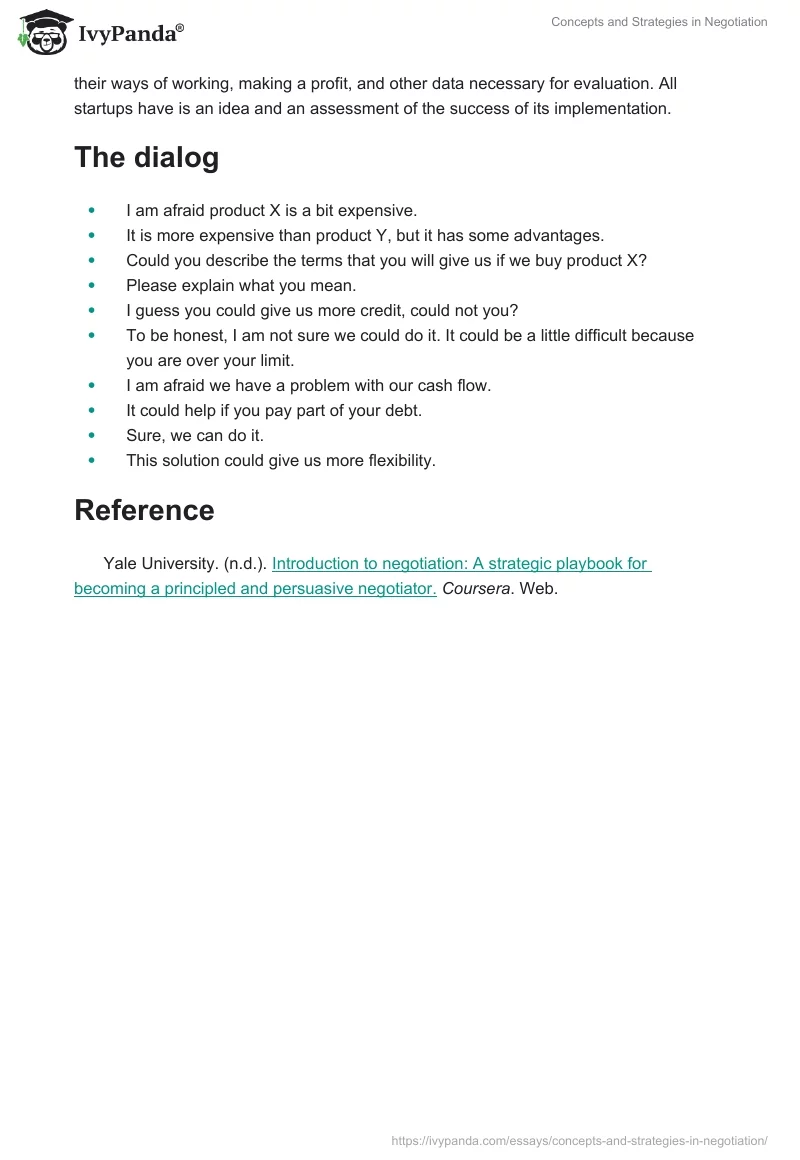The video “Introduction to Negotiation” greatly benefited me as I learned new concepts and strategies. First, I understood what a reservation value or BATNA is and how it is determined. The narrator explains that the two main points of negotiation are to know your reservation value and do not pay more or less depending on your role of seller or buyer (Yale University, n.d.). Although this video gives examples of financial operations, it can also be used in any kind of negotiation. In addition, an essential aspect of this video is that it explains the positions of the buyer and seller. Hence, an important condition for successful negotiations is understanding the reservation value of the other party, since this knowledge gives an advantage in setting the most favorable price.
The video “Start By Asking” is a helpful addition to the theoretical concepts presented in the first video. The speaker, using a specific practical example, explained how to use a reservation value in negotiations. In addition, the most useful information of this video for me was an example of how a speaker would find out information about a company and then use it to raise the price. This situation is a prime example of how one can use BATNA in negotiations.
I once got involved in a negotiation selling my old game console. I charged a reasonably high price as the product was almost new, and I expected a buyer to try to lower the price. Thus, I used reservation value, although I was not aware of the concept. Eventually, I reduced the price to my reservation value, and although the negotiations were successful for me, I would like to get more for it. If I had known BANTA during those negotiations, I would have learned more information about the buyer before the price cut and could have made more profit. After the sale, I found out that the buyer urgently needed a console as a present; thus, he could agree to a higher price because he had no time to search another present.
One of the main reasons why some valuation methods are not suitable for a startup is the lack of “historical” data. In other words, to evaluate a company like Apple, data from past years of its work, strategy, and also the organization’s reliability can be used. At the same time, startups are new companies that do not yet have information about their ways of working, making a profit, and other data necessary for evaluation. All startups have is an idea and an assessment of the success of its implementation.
The dialog
- I am afraid product X is a bit expensive.
- It is more expensive than product Y, but it has some advantages.
- Could you describe the terms that you will give us if we buy product X?
- Please explain what you mean.
- I guess you could give us more credit, could not you?
- To be honest, I am not sure we could do it. It could be a little difficult because you are over your limit.
- I am afraid we have a problem with our cash flow.
- It could help if you pay part of your debt.
- Sure, we can do it.
- This solution could give us more flexibility.
Reference
Yale University. (n.d.). Introduction to negotiation: A strategic playbook for becoming a principled and persuasive negotiator.Coursera. Web.


